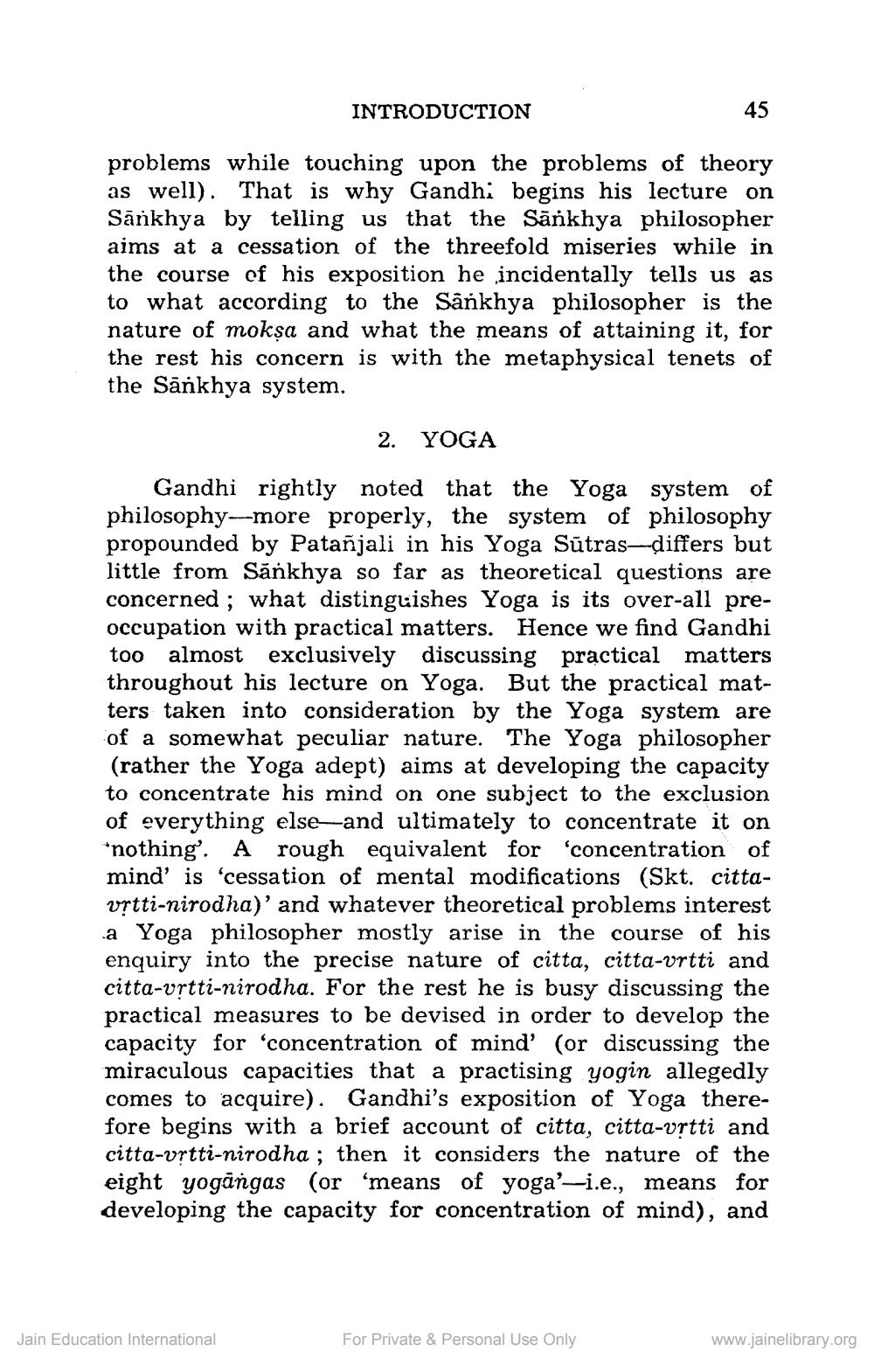________________
INTRODUCTION
45
problems while touching upon the problems of theory as well). That is why Gandhi begins his lecture on Sānkhya by telling us that the Sānkhya philosopher aims at a cessation of the threefold miseries while in the course of his exposition he incidentally tells us as to what according to the Sankhya philosopher is the nature of mokṣa and what the means of attaining it, for the rest his concern is with the metaphysical tenets of the Sankhya system.
2. YOGA
Gandhi rightly noted that the Yoga system of philosophy--more properly, the system of philosophy propounded by Patañjali in his Yoga Sūtras-differs but little from Sănkhya so far as theoretical questions are concerned; what distinguishes Yoga is its over-all preoccupation with practical matters. Hence we find Gandhi too almost exclusively discussing practical matters throughout his lecture on Yoga. But the practical matters taken into consideration by the Yoga system are of a somewhat peculiar nature. The Yoga philosopher (rather the Yoga adept) aims at developing the capacity to concentrate his mind on one subject to the exclusion of everything else and ultimately to concentrate it on *nothing'. A rough equivalent for 'concentration of mind' is 'cessation of mental modifications (Skt. cittavịtti-nirodha)' and whatever theoretical problems interest .a Yoga philosopher mostly arise in the course of his enquiry into the precise nature of citta, citta-vrtti and citta-vịtti-nirodha. For the rest he is busy discussing the practical measures to be devised in order to develop the capacity for concentration of mind' (or discussing the miraculous capacities that a practising yogin allegedly comes to acquire). Gandhi's exposition of Yoga therefore begins with a brief account of citta, citta-vrtti and citta-vrtti-nirodha; then it considers the nature of the eight yogāngas (or 'means of yoga'-i.e., means for developing the capacity for concentration of mind), and
Jain Education International
For Private & Personal Use Only
www.jainelibrary.org




